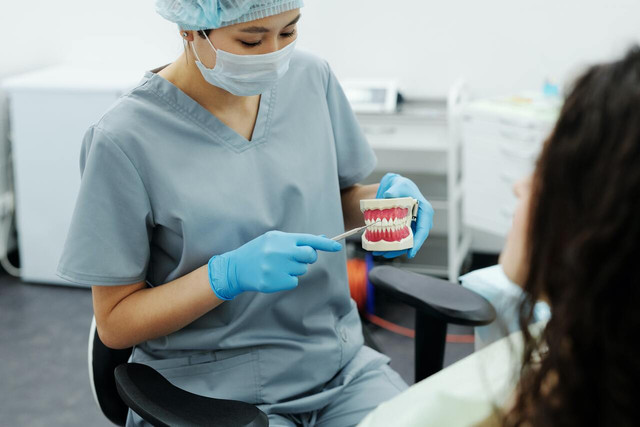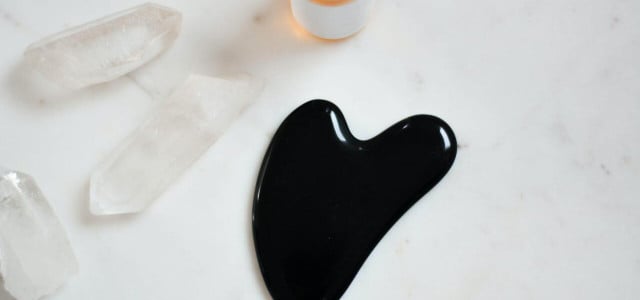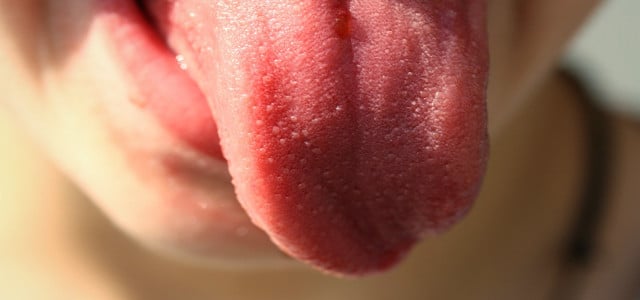Beauty TikTokers have taken to "mewing", but why? What's meant to change your jawline might just be a hoax. Keep reading to find out all about this jaw-defining technique.
TikTok can be a breeding ground for trends that promise a flatter belly, toned glutes, fuller lips, thicker hair and – in the case of mewing – a defined jawline. While some toning and shaping exercises may fulfill their promises, let’s consider whether the same applies to mewing.
Mewing is a technique meant to define your jawline simply by altering the placement of your tongue. We want to know: does mewing work?
What Is Mewing?
https://vm.tiktok.com/ZGJX2XrXo/
The term mewing originates in the name of the orthodontist Dr. Mew who coined the term back in the seventies. He claimed the technique will change the strength and thus the shape of your jaw, leaving you with a more appealing face shape.
Mewing is a technique where you place your tongue on the roof of your mouth to alter the look of your jawline. Advocates say that the tongue should touch the roof of your mouth entirely, not just with the tip of your tongue. Apparently, you can quickly find the right placement if you place your tongue as you would when saying “ng” as in thing, wing or sing.
Placing your tongue like this might feel tiring at first, especially if you’re not used to the movement. If you’re mewing correctly, you’re even supposed to feel some pressure in the middle of your face, your jaw and your chin area. If repeated throughout the day, you might get accustomed to it and train your body to return to this position naturally.
People share videos showing instant before and after effects, switching from a less defined chin area to a sharp jawline within seconds. These videos are presumably what made mewing so popular in the first place. Now people are arguing whether mewing can have long-term effects or if it’s just a short-term hack for a “chiseled” face that you can use when posing for pictures.
Does Mewing Work?



(Foto: CC0 Public Domain / Pexels / Cedric Fauntleroy)
While the short-term effects shown in many of the viral videos are substantial, they really are just that: short-term. There is no scientific evidence to support long-term changes in your jawline when engaging in mewing.
The American Association of Orthodontists admits that the placement of your tongue may temporarily alter your facial structure but goes on to say that there is much more to facial restructuring than tongue placement. This includes changes in jaw bones, facial bones and soft tissue.
Ultimately, their advice is to get information on the long-term, irreversible changes in jaw structure that could be caused by a technique such as mewing. It’s crucial to understand that by applying pressure to your teeth, mewing might cause damage if not done correctly. Their conclusion is to skip on mewing.
Scientific evidence shows, however, that our jaws become smaller and weaker, as we’re not used to chewing hard nutrition anymore and often breathe through our mouths instead of our noses. If you’re interested, learn why nose breathing is better for your health.
Conclusion
People may or may not experience results from mewing. Regardless of that, it is worth noting that before and after pictures online can be quite misleading and social media tends to push forward a certain standard of beauty that is both unrealistic and overly focused on Western beauty ideals. The bottom line: you probably won’t see significant changes to your jawline from mewing, but that’s not necessarily a problem.
If you’re seeking more short-term techniques to get a healthy glow for your face, check out our article on face massage benefits.
Read more:
- How to Make Rosemary Water for Hair: Natural Hair Growth Solution for Stronger, Shinier Locks
- 7 Eco-Friendly TikTok Makeup Trends
- 6 Ways to Improve Skin Texture Naturally & Products to Help
Do you like this post?








